Why do most people prefer to drive rather than take the bus? It’s because they don’t have to plan their trip – and so, their day – around a schedule they didn’t make.
Electric cars have that same issue in that you have to think constantly about scheduling your day around how much range you have left – and how much time you don’t have to wait for a recharge. 
It’s a problem you won’t have if you’re driving Mitsubishi’s new Outlander plug-in hybrid, which is an interesting evolution of the hybrid concept.
It has enough electric range – almost 40 miles – for most daily trips but it also has more range for much longer trips, so you don’t have to schedule your day around stopping – and waiting – if you need to be able to drive as far as you like, whenever you like.
It can also be recharged as “fast” as a full-time electric car, too – a feature no other plug-in hybrid in its class (or price range) offers.
What It Is
The Outlander PHEV is a new, plug-in hybrid version of the Outlander crossover, which is one of few compact-sized Crossovers that seats seven in three rows rather than the usual (in this class) five in two.
It is also one of the few plug-in hybrids that can be recharged – in about 40 minutes – at high-voltage commercial “fast” chargers, as opposed to much more slowly (overnight) at home, on household current.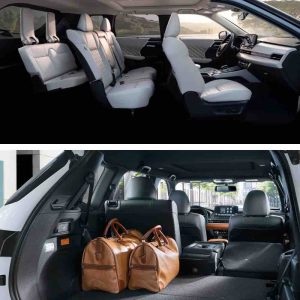
Its primary rival, the plug-in version of Kia’s Sorento (which also has three rows) does not offer this capability.
Prices start at $39,845 for the base ES trim – which is about $10k less than the plug-in Sorento’s base price of $49,990.
A top-of-the-line Anniversary Edition – marking Mitsubishi’s 40th year selling cars in the United States – comes with a 1,500 watt AC power outlet, three-zone climate control and a premium Bose audio system with nine speakers.
It lists for $49,995
Unlike the non-hybrid version of the Outlander, all plug-in Outlanders come standard with a 12.3 inch LCD touchscreen, all-wheel-drive, seven driver-selectable Drive Modes, much more horsepower (248 vs. 181) and much better gas mileage.
What’s New for 2023
The plug-in Outlander is all-new.
An EV when you need it to be that can go as far as you need it to go whenever you need to get going – without having to schedule it.
Can accommodate two more passengers than most compact crossovers.
Much quicker than non-hybrid Outlander.
Much more expensive than non-hybrid Outlander (which stickers for $27,595 to start).
“Fast” charging still takes at least eight times as long (about 40 minutes) as the less-than-five-minutes it takes to gas up.
With the third row in use, there’s very little space left for cargo behind it (just 11.7 cubic feet).
Unlike the regular (non-hybrid) Outlander – which comes only with a 2.5 liter four cylinder engine that makes 181 horsepower – paired with a continuously variable (CVT) automatic transmission and either front-wheel-drive (standard) or all-wheel-drive (optional), the plug-in Outlander comes standard with a slightly smaller 2.4 liter four cylinder engine, paired up with two electric motors, a 20 kilowatt-hour battery pack and 248 horsepower distributed via standard AWD.
The result is much quicker acceleration.
Zero to 60 takes just 6.3 seconds, about three seconds quicker-to-60 than the non-hybrid Outlander – and you have the capability to operate as an EV for about 38 miles. Uniquely in its class and price range, this Mitsu also has the ability to make use of DC current “fast” chargers, just like full-time EVs. This makes it much more feasible to operate the Outlander as an EV more often – because you don’t have to wait for hours (or overnight) before you can drive it as an EV again.
Its EV range is also long enough to keep the gas engine off most of the time, if your daily drive is less than about 38 miles there and back. That could save you enough on gas to make back what you spend up front on the plug-in hybrid powertrain. It’s also handy to have the option to burn gas – or electricity – especially if you can’t get gas, a possibility in our looming post-apocalypse future. If you have solar at home, you might still be able to drive short distances when everyone else is walking.
But the most important thing about the Outlander hybrid is you’re not tethered to a cord – and a wait. If you exceed the Outlander PHEV’s electric-only range, you still have more than 300 miles of range – in city driving – left.
You can stop when the battery’s charge runs low – if you like. If you have the time to wait. But you don’t have to, if you don’t. And – after running out of the 300-400 miles of range on gas, you can refill the tank in less than five minutes and be ready for another 300-400 miles of driving without stopping again.
Unless you want to.
Gas mileage – when you’ve used up the range on battery power – isn’t great. Mitsu claims 26 MPG, in combined city/highway driving. Identical to the non-hybrid’s mileage. But that can be signoficantly increased if your trip is within the Mitsu’s range on battery power.
The point – or rather, the selling point – is having a short-range EV with the long-range capabilities of a non-EV, without the time-cost and scheduling rigmarole of owning a full-time EV.
If you have ever driven a full-time EV you already know about range anxiety – which is perhaps better described as wait anxiety. It is not so much that most EVs don’t go nearly as far on a charge as most non-EVs can go on a tank; it is how long you must wait to get going again, when an EV runs low on charge.
Even at so-called “fast” chargers – which aren’t at home, so you’ll have to drive there first – the wait to recharge will be at least half an hour or longer, for a partial charge. This can really interrupt your day if you haven’t got time to just sit and wait. And – as many full-time EV owners are finding out – sometimes, you might not be able to get any charge at all at a “fast” charger – if it’s not charging. In which case you are stuck.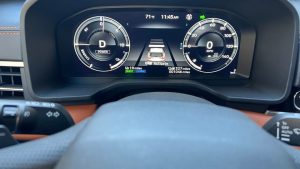
A plug-in hybrid like the Outlander PHEV that can recharge itself as you drive and which doesn’t have to stop for a charge, at all, eliminates that problem – thereby eliminating the anxiety. You just drive, as you’re used to doing.
And on account of that, it can be fun to keep track of how much range you have left in this rig because it doesn’t matter if you run low on charge. You can even “push it” to the nth degree, to see exactly how far you can go – without any consequences.
With a full-time EV, running low on range can be alarming, especially if the range runs lower faster than you thought it would. Which it will, if it is very cold outside. You might lose 20 percent more than you thought you had – and if you didn’t plan for that . . .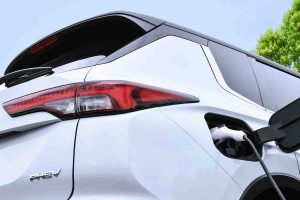
Of course, this part-time EV is just that. It cannot go more than about 38 miles as an EV and then you’ll be on the gas. This offends the Climate Cultists, who regard the “emission” of any gasses much the same as weaponized hypochondriacs regard the sight of an “unmasked” face.
But it does go when you give it gas – which is something else it has in common with full-time EVs. They all benefit from the acceleration-immediacy of electric motors, which apply power to the wheels without the intermediary of a transmission. Electric motors also produce abundant power, immediately. Floor the gas and this Outlander giddyaps – which the standard Outlander does not. The latter is so slow you’d swear it was dragging something really heavy behind it.
You can also tailor the hybrid powertrain to suit, using any of the four additional Drive modes that are specific to this model.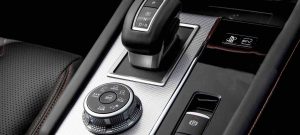
In Normal mode, the twin electric motors and gas engine alternate and supplement, as driving conditions and loads warrant.
In EV Priority, you’re running entirely on the batteries – assuming you have sufficient charge to do so.
Save mode preserves the charge you have, by firing up the gas engine to keep you going. Charge mode tops off the battery’s charge (using the gas engine) during coast and other light-load driving conditions, so that you can revert to full EV mode (and go farther in EV mode) without having to stop for a charge.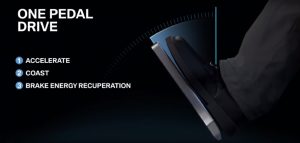
There is one other thing this part-time EV has in common with full-time EVs: One pedal driving, if you like. You can use the accelerator to get going and to go slower; just back off the accelerator and instead of coasting, the Outlander will be slowing.
Also charging – as this form of braking uses the kinetic energy of movement to generate electricity (as opposed to wasting energy, lost through heat). This method also helps brake pads last longer, since you’re not using the brakes as much.
Mitsubishi says the Outlander’s styling is “outlandish.” That’s a stretch. What makes it stand out is that it’s one of just a few compact crossovers that comes standard with three rows of seats and room for up to seven people and the only one that’s a plug-in hybrid with “fast” charging capaility.
It’s a tight squeeze for the passengers in the third row but the fact that there is a third row makes this compact-sized crossover a feasible choice for those who must have those extra seats but would prefer not to go up a size.
There is a cost, of course.
It is not much space behind the third row. Less than 12 cubic feet, which is about what you’d have if you were to buy a compact-size car. But the difference is that you can increase that by more than five times – to 79.7 cubic feet – by lowering the second and third rows. And just by lowering the third row, you more than double the available space for cargo. This is something you cannot do with a compact-sized car, which can only carry five people and no more than what will fit in its trunk.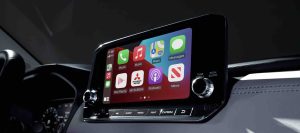
You’ll also get more standard equipment vs. the standard (non-hybrid) Outlander, including a much larger (12.3 inch) LCD touchscreen (vs. the standard Outlander’s 8 inch unit) with hybrid-specific displays, LED headlights and tail-lights, as well as higher-grade trim throughout.
The 40th Anniversary has heated and massaging driver/front passenger seats, Semi-Aniline leather seats and a power panorama sunroof, too. This trim isn’t inexpensive but it is also much less expensive than what you’d have had to spend just a couple of years ago to get massaging seats, which used to be available only in vehicles that cost closer to $80k and up.
The Rest
There is one hair in the soup.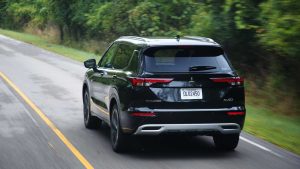
Mitsubishi doesn’t include fast-charge capability with the standard ES and nest-up SE trims. It’s not available with these trims, either.
If you want to be able to recharge in less than several hours, you’ll have to spring for either the SEL or the Anniversary trims, which are the only trims that come standard with fast-charge capability. But these trims cost much more than the ES and SE trims.
Granted, you get more for the money – in the sense that you’ll spend less time.
But you’ll be paying for it.
The Bottom Line
Overall, this is an interesting way to split the difference between a full-time EV and the convenience/practicality of a non-EV.
. . .
If you like what you’ve found here please consider supporting EPautos.
We depend on you to keep the wheels turning!
Our donate button is here.
If you prefer not to use PayPal, our mailing address is:
EPautos
721 Hummingbird Lane SE
Copper Hill, VA 24079
PS: Get an EPautos magnet or sticker or coaster in return for a $20 or more one-time donation or a $10 or more monthly recurring donation. (Please be sure to tell us you want a magnet or sticker or coaster – and also, provide an address, so we know where to mail the thing!)
My eBook about car buying (new and used) is also available for your favorite price – free! Click here. If that fails, email me at EPeters952@yahoo.com and I will send you a copy directly!


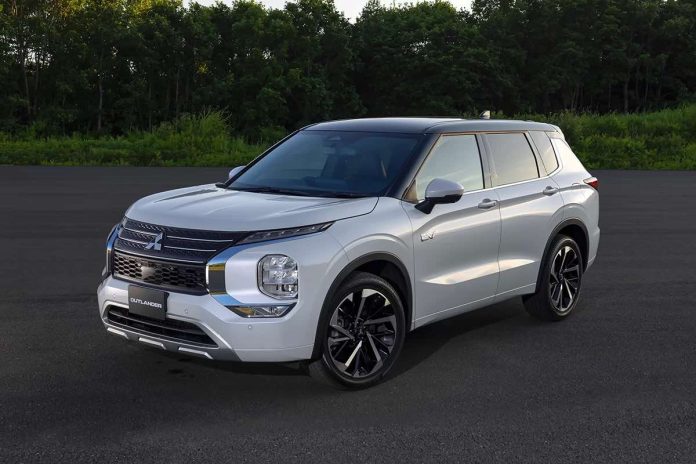

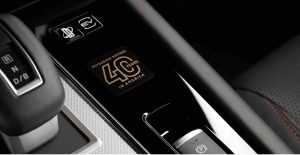
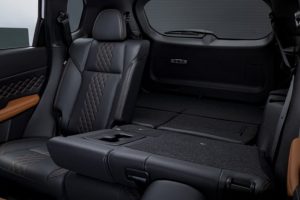

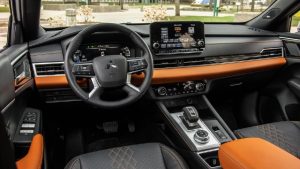
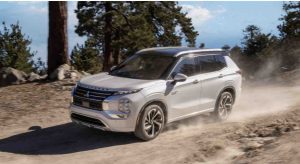
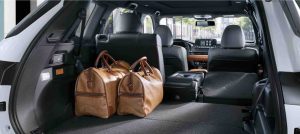

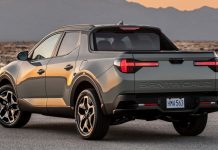

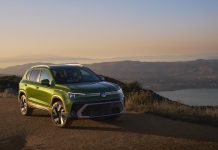


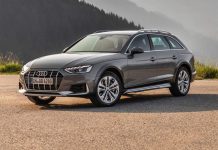
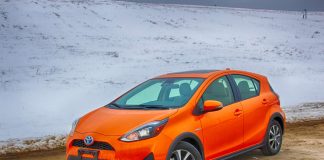
I’ll pickup the 40th Anniversary edition in a few years when it drops to ~$25k.
Which won’t be that many years given it’s a Mitsubishi. 🙂
That 1500W inverter will run my gas furnace just fine in the event of a power outage.
And I will buy a fully loaded 2023 Mitsubishi Outlander PHEV SEL Premium anyway.
Huh, I thought this husk of a manufacturer only had the Eclipse Cross left.
“Its EV range is also long enough to keep the gas engine off most of the time, if your daily drive is less than about 38 miles there and back. That could save you enough on gas to make back what you spend up front”
Probably not if you have to pay for electricity. Maybe if you’re using Dad’s or whatever.
Got a question, possibly stupid, but do hybrids have the same battery layout that the all electric vehicles do? I guess they don’t, but do hybrids have the same potential for fires that all EV vehicles do? As I ask this, I realize I don’t know of any hybrid fires. Only reason am asking is, I saw on the news another Tesla fire in Arizona. Thought some of the comments in the articles were stupid.
Example: Witnesses at the scene tell ABC15 a teen girl was attempting to park the vehicle and then it went forward, hitting the building.
The exact cause is still under investigation. I would think she hit the accelerator is why it went forward?!? Her child was also in the vehicle. (age?) Distracted?
The tow truck driver received minor injuries and was taken to a hospital. It’s unclear what caused the injuries. Uh, maybe it was the fire he was towing on the back of his truck??
Don’t be laughing at my ignorance, I don’t know nothing ’bout birthing babies.
‘M.D. Clark, battalion chief with Scottsdale Fire, says while the Tesla was on a tow truck it sparked and caused another fire. The vehicle had to be let off of the tow truck in the middle of the street to keep the fire from spreading further.’
https://www.abc15.com/news/region-northeast-valley/scottsdale/tesla-crashes-into-scottsdale-building-catches-fire
That Tesla-gone-bad was just a serial arsonist.
“I told you once before that there were two times for making big money, one in the up-building of an EeeVee and the other in its destruction. Slow money on the up-building, fast money in the crack-up. Remember my words. Perhaps they may be of use to you some day.”
— Rhett Butler
Just had a thought. After reading your review of the 23 Savanah and this, why no “cargo” SUVs? Just like a cargo van, leave an empty shell behind the driver and passenger. Sure you can fold down seats, but what if there were no seats to begin with? How much could you haul then?
My guess is that the unibody doesn’t have a flat floor, and so they’d have to put something back there. Or it would reclassify the vehicle as something else and subject to different rules.